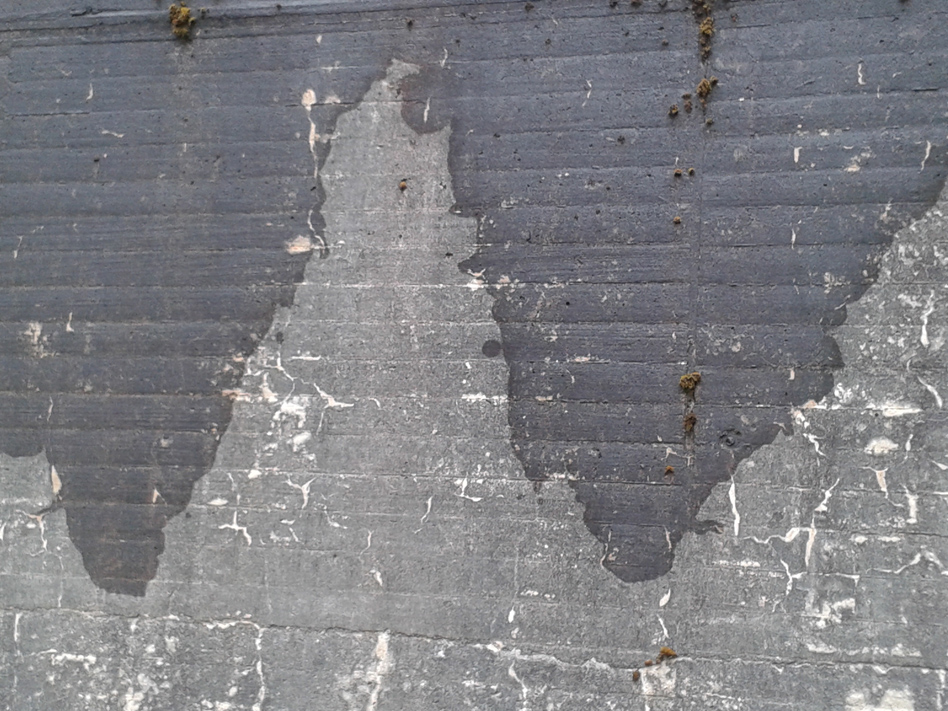()
Water is an ever-present feature of the Upper Kiewa Valley - physically, materially, experientially, culturally and functionally - and it’s the medium through which the ruggedness of the land formations relates to the infrastructure of the hydroelectric scheme. That infrastructure permeates the valley, be that underground, on the ground, or through the air. Side roads and fire trails leading off from the Alpine Way invariably take you to nearby power pylons, or further afield to remote dams, pipelines or power stations, and all of that is here to convert the energy of moving water into electricity.
Yesterday walking around the Junction Dam I struck up a conversation with Brett, an AGL engineer, who was out performing regular checks on the wall. We chatted about water management in valley, and the idiosyncrasies of the installation at Bogong, one of which being that the entire power station is concealed under an artificial hill. This means that the transformers (one of the more temperamental parts of a power station) are underground - an unusual situation resulting in some unique technical problems. He also answered my question as to where the electricity from Bogong feeds into the system, as there’s no obvious chain of poles and wires leaving the station. As it turns out the cable travels discretely under the river, then up the hill to a pylon located at the turn off from the 4-wheel drive track to the Black Possum Spur. I’d noticed a small installation of equipment next to that pylon, but hadn’t realised its significance. It was one more piece in the puzzle of how the disparate components of this place go together.
Although Brett and I covered quite a bit of ground in our talk, one thing I didn’t go into with him was my experiments the previous day, which incorporated both the way electricity can be generated and the infrastructure used to make that happen. However, where the hydro scheme functions on such a massive scale, my work is at the opposite end of the spectrum, dealing in tiny fluctuations in voltage. And unlike the scheme’s technical sophistication and complexity, my devices are often basic to the point of being primitive. So for my first experiment the aim was to generate an electrical voltage in the simplest way I knew how, but in a manner that also incorporated some part of the electrical infrastructure that is such a prominent feature in the landscape (even when it is hidden under artificial hills).
To do this I hung a small bunch of rare earth magnets from a string attached to one of the lower cross spars of a power pylon, approximately 3.5 metres off the ground. The magnets then swung back and forth in the breeze, passing over an electrical coil I’d made from several metres of copper wire wrapped by hand around a core of ferrite, plus some electrical tape to hold it all together. An audio cable with alligator clips connected the two ends of the copper wire to a recorder, which registered a small chain of low frequency pulses each time the magnet swung over the middle of the coil and interacted with its magnetic field, and higher pitched ‘swishes’ when it moved more towards one end or the other. The rate of these sounds depended on both the length of the string and the amount of breeze. Overall it was as simple as it was impractical, but the pulses and swishes, plus a lot of other attendant sounds of hum and interference (some of which no doubt coming from the wires overhead) make for fascinating listening.
The other experiment had me standing barefoot in a small creek for an hour or so, repeating some work I’d done last week to see if a change in approach might yield some different results. I was using a tiny water turbine made out of a 3.5v electric motor, with simple blades constructed from plastic cut from a takeaway container attached to a wooden wheel with thumbtacks. The wheel was slotted onto the spindle of the electric motor, and a length of audio cable soldered to its ‘outputs’ (that would noramlly be the points you would attach a battery or some other power source to) before all the vulnerable parts were wrapped in electrical tape. This incredibly basic design takes advantage of the reversibility of electric motors: put electricity into them and it makes the spindle rotate; rotate the spindle and it will make electricity. Simple.
This is hydroelectricity, but on a tiny scale, and with a very different relationship to water. The Kiewa scheme manages water flow and storage on a grand scale in order to maintain a constant, regular flow of power - the flat line hum of mains electricity. However, this little turbine interacts with the natural variable flow patterns of the creek, producing voltage in bursts, or short runs of semi-regular rhythms, which are determined by the flow of water in a given spot in the creek at a given moment. Moving from place to place in the creek there were times where the sounds of the water and the low frequency throb of the turbine’s output began to merge - an indication, I hope, of a more sympathetic exchange with the energies of this environment, and one where water has the upper hand.
